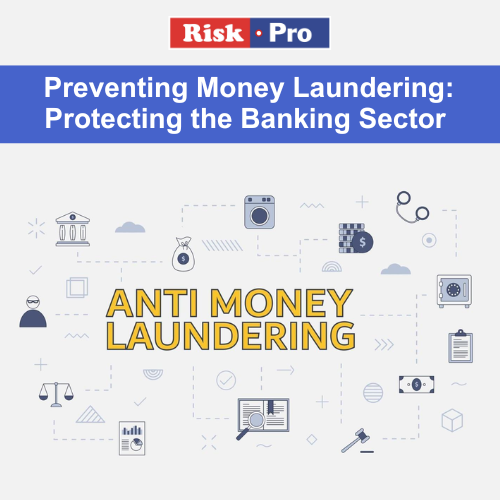
The act of concealing the source of funds is a matter of concern in recent past, lwhich is, usually done through transactions with foreign banks or reputable companies. That’s what is Money Laundering. The regulatory requirements that force financial institutions and other regulated businesses to identify, stop, and report these activities are known as anti-money laundering (AML) measures. Such measures will enhance the integrity of financial institutions and prevent money from being used for illicit activities.
Understanding Money Laundering
Usually, there are three steps involved in money laundering:
Placement: The process of bringing "dirty money" into the financial system, frequently via companies or banks or cryptos.
Layering: Hide the money's true source by financial transactions on multiple levels. Any entity can be used as a vehicle for the same including shell companies.
Integration: The money that has been "cleaned" now re-enters the economy and seems genuine.
These ultimately disguises or conceals true source of income, as these make it challenging for law enforcement to track its illicit source.
Anti-Money Laundering's (AML) Significance
AML precautions are essential for a number of reasons:
Preserving Financial Integrity: It preserves financial integrity and faith in the financial and regulatory framework of the country.
Preventing Social and other Crimes including preventing distortion of environmental factors and ecological balance. Thus, it leads to helping sustainability.:
Compliance with International Standards:
Preserving Economic Stability: Money laundering has the potential to skew economic statistics and undermine stability. Its prevention contributes to a more accurate economic environment.
Important AML Program Elements
Several essential elements are usually included in AML programs in order to identify and combat money laundering:
Customer Due Diligence: Financial institutions are required to conduct Customer Due Diligence (CDD), which entails confirming the identities of their clients and determining the nature of their business interactions. It is necessary to perform enhanced due diligence, or EDD, on high-risk clients.
Transaction Monitoring: -Banks and other financial organizations keep an eye on transactions to look for any suspect activity, such as suspiciously large payments or patterns that would point to money laundering.
Record-keeping: To aid in government investigations, financial institutions are required to keep records of transactions and client identity for a specific amount of time including filing details to FIU, who also maintains record of financial trails.
Internal Controls and Training: To guarantee adherence to AML requirements, institutions need to put internal controls in place and teach staff members.
International Law and Policies
National AML frameworks are guided by a number of international organizations and rules in the worldwide battle against money laundering:
The Financial Action Task Force (FATF) is an intergovernmental organization that establishes global guidelines and encourages the efficient application of legislative, administrative, and operational measures aimed at guiding policy makers of various countries. preventing money laundering.
European union AML Directives: Directives on AML issued by the EU to improve and unify AML initiatives among its member states, the EU has released a number of AML guidelines.
USA PATRIOT Act: The USA PATRIOT Act is a set of laws designed to stopcombat the funding of terrorism and money laundering in the United States.

Challenges in the implementation of AML
Even with strong frameworks in place, AML initiatives are complicated by a number of issues:
Technological Developments: New channels for money laundering have been opened up by the quick development of digital banking and cryptocurrency, among other technologies.
Global Coordination: It is still difficult to coordinate AML efforts throughout several jurisdictions with disparate legal frameworks and levels of enforcement.
Allocation of Resources: Smaller financial institutions, in particular, frequently face difficulties in allocating the funds and resources necessary to put in place efficient AML procedures.
Balancing privacy & security: Ensuring customer privacy while maintaining robust AML measures is a delicate balance that institutions must navigate. For example, Adhar Card related amendments were outcome privacy of biometric data. Further, use of unstructured data or data from social media, analytics data relating to IP Address being used etc though provide further insights while client onboarding, it has its own challenges by way of data privacy issues along with model errors while using AI and ML.
Role of Technology in AML
Technology is becoming more and more important in boosting AML initiatives. Among the innovations are:
Machine learning and artificial intelligence (AI) : are two technologies that can evaluate enormous volumes of data to find unusual patterns and trends that could point to money laundering.
Blockchain Technology: The transparency of blockchain technology can be used to track and verify transactions, even though cryptocurrencies present AML problems.
RegTech Solutions: By offering instruments for compliance, reporting, and risk management, regulatory technology (RegTech) enables institutions to fulfill their AML requirements more effectively.
VCIP is a digitised concept of CDD and EDD where KYC and client onboarding are done digitally. Further, e-Adhar authentication, e-KYC, digital locker etc are more prominently used now for KYC and client onboarding.
The Future for AML
More sophisticated technology, enhanced international collaboration, and more stringent rules are expected to be combined in the future to address AML. Important patterns consist of:
Increased Regulation: It is anticipated that governments will keep enforcing AML laws more strictly
Enhanced International Cooperation: To combat money laundering globally, international organizations will probably advocate for more unified and cooperative initiatives.
Technological Integration: The integration of sophisticated technologies, such as AI, blockchain, and data analytics, will play more crucial role in boosting AML capabilities.
Conclusion
An essential element of the international campaign against financial crime is anti-money laundering measures. Financial institutions and regulators can contribute to maintain the integrity of the financial system, safeguarding economic stability, and combating the funding of illicit activities by strong AML measures and systems. In order to keep abreast of more complex money laundering schemes, the AML industry must adapt and innovate as technology and the regulatory environment continue to change. Achieving these objectives and guaranteeing a safe and open financial environment for everybody will depend on governments, financial institutions, and international organizations continuing to work together to further evolve and develop. To know more contact us at info@riskpro.in
